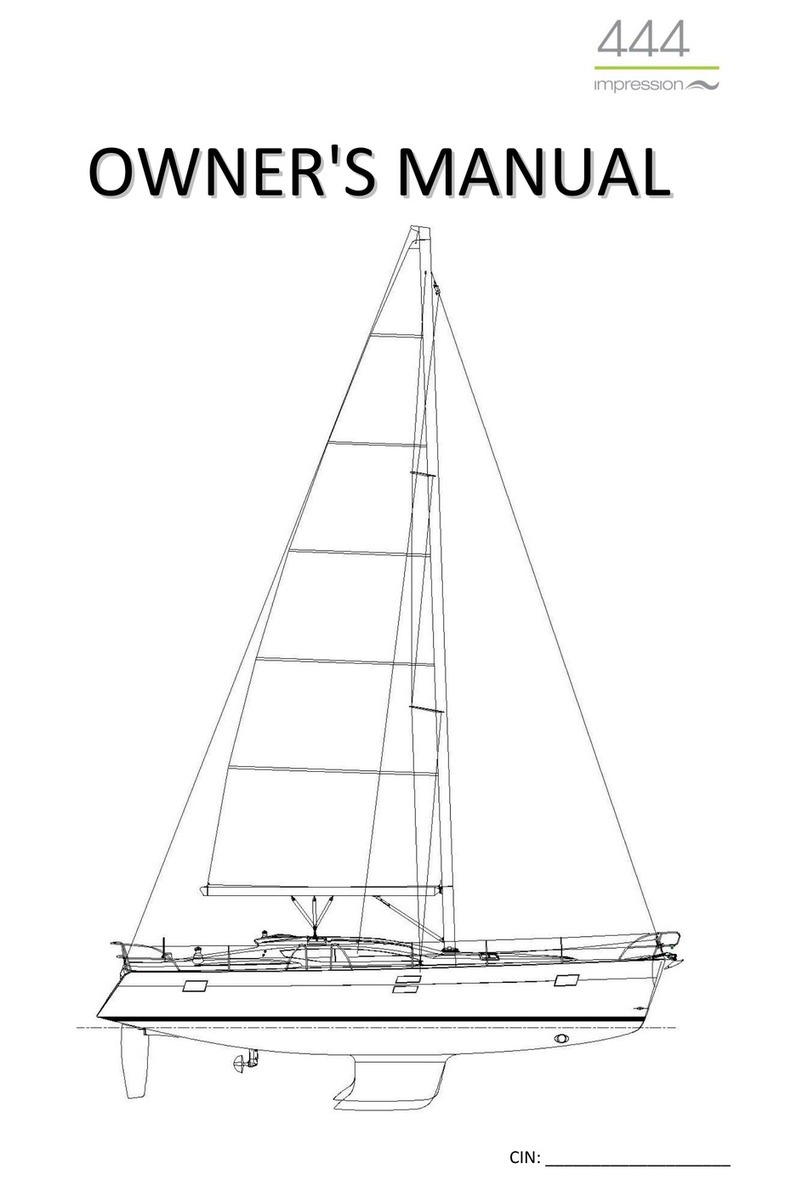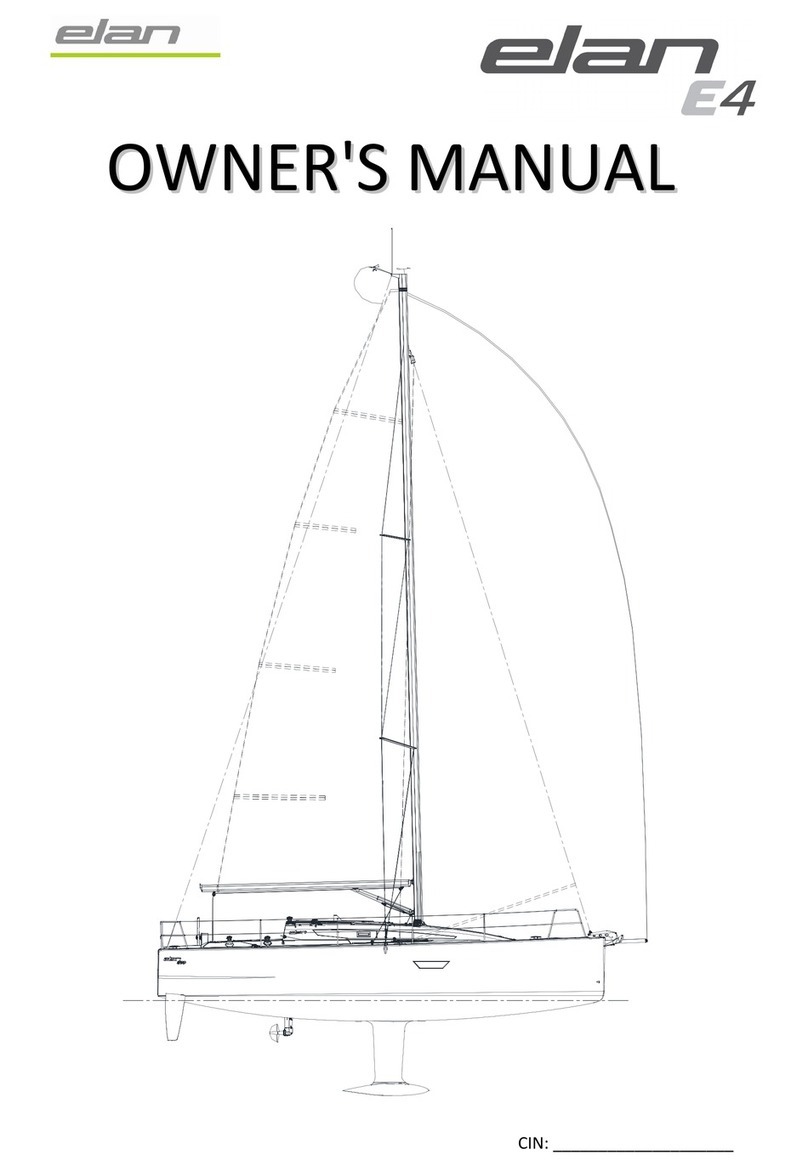
Owner's Manual
1
1.1
1.2
1
2
3
4
5
6
7
8
9
10
11
Know the limitations of your boat;
Any boat dealer or national sailing federation or yacht club will be pleased to advise you of local sea
schools, or competent instructors
It is the boat owner/operator's responsibility to:
Make sure you receive a full explanation of all systems from the person transferring ownership to you.
Congratulations on becoming the new owner of a: Elan Impression i40.1
Have the craft inspected by qualified personnel at regular intervals and whenever
a cause for concern is raised; and
Responsibility
Ensure that the anticipated wind and sea conditions will correspond to the design
category of your boat and that you and your crew are able to handle the boat in
these conditions;
Never sail when the operator is under the influence of drugs or alcohol;
Boating Experience
Reduce speed when there is limited visibility, rough water, people in the water
nearby, boats, or structures;
Ensure all crew receive suitable training, particularly with regards to location and
operation of safety equipment;
Ensure compliance with all legislation in place in the area of operation. These may
include requirements for the carriage of life saving equipment, licensing of the
helmsman and respect for the environment.
Ensure the craft is properly maintained at all time;
Follow the rules of the road;
Be aware of the crew/passenger's safety at all times;
Regardless of the craft's seaworthiness and its certified design category, protection from freak sea
and wind conditions cannot be guaranteed. Beware of offshore winds and currents. The ability,
experience and fitness of the crew, therefore, should be taken into consideration before making any
voyage.
WELCOME
If this is your first craft, or you are changing to a type of craft you are not familiar with, for your own
comfort and safety, ensure that you obtain handling and operating experience before assuming
command of the craft.
Keep a sharp lookout for people and objects in the water;
Technical Software © Licensed User: Elan d.o.o., 2019
4/44































